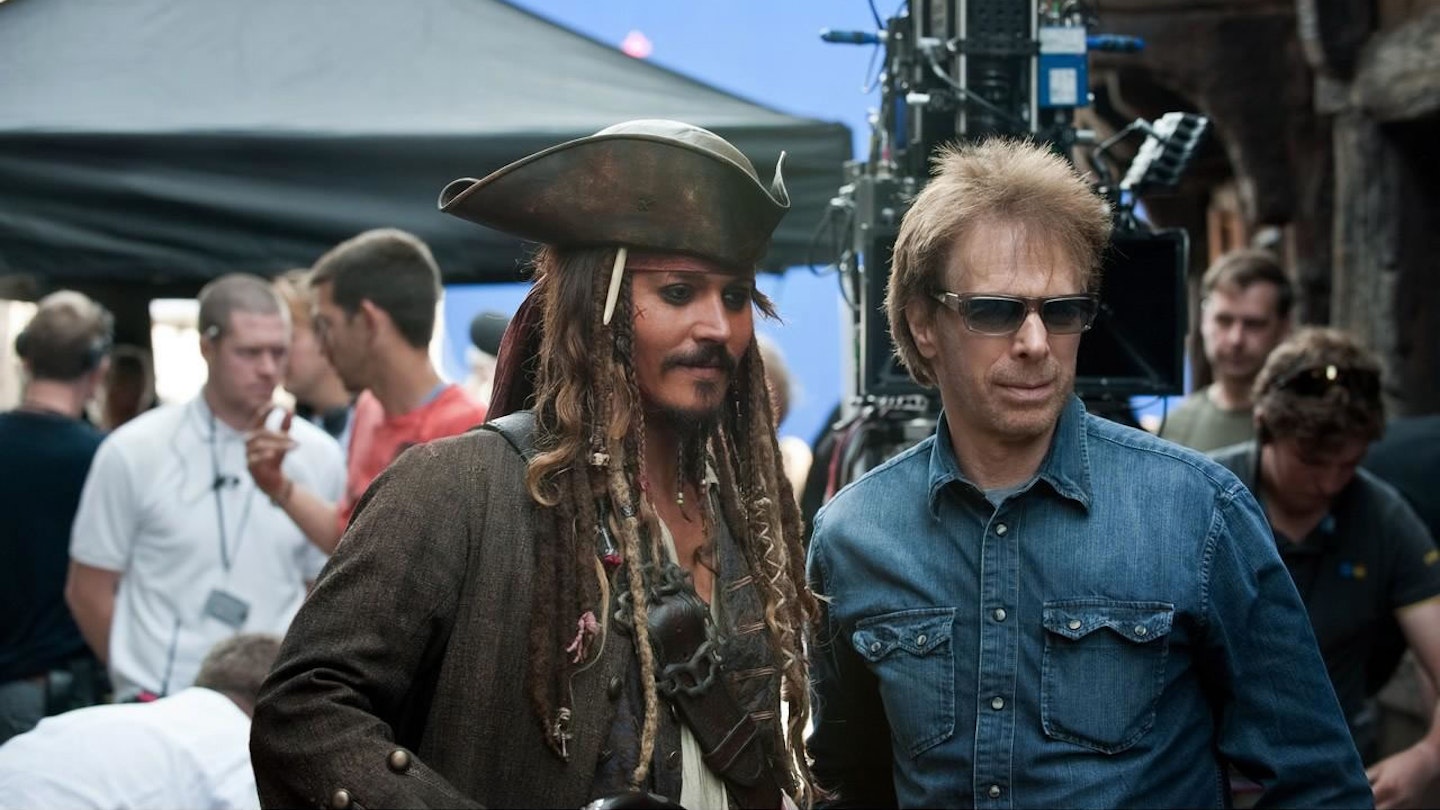What is a grip? Who’s Foley and why does everyone call that man The Gaffer? Anyone who has sat through the credits of a movie will have wondered what the people on the list actually do. Here we bring you a list of film set employees, from the lowly runner to the director himself, and explain what exactly it is that they do to earn their name in lights...
The Director
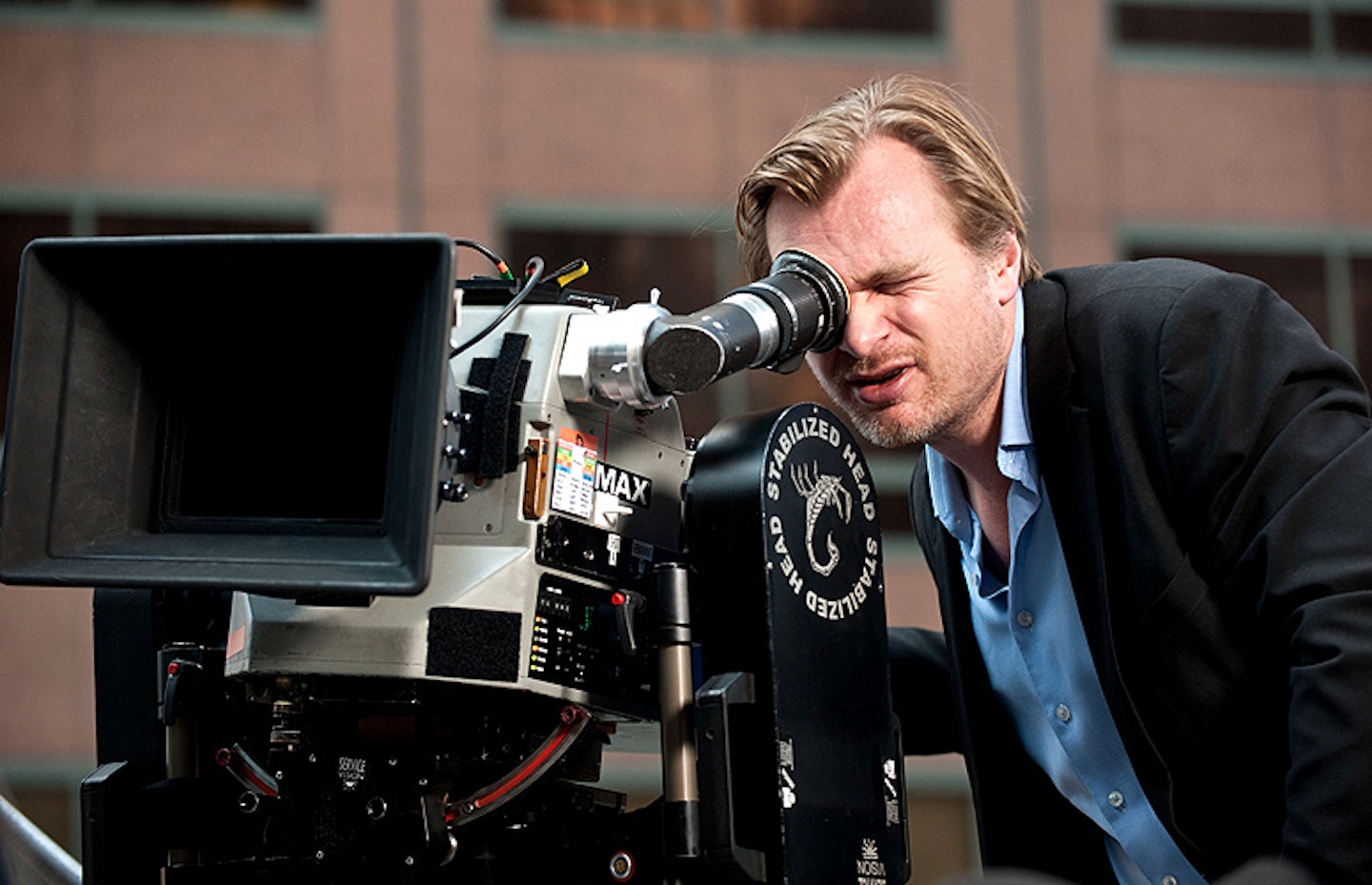
Christopher Nolan directing The Dark Knight Rises.
**What do they do?**The poobah, grand fromage and first link in the on-set chain, the director is the person responsible for getting a vision onto the screen. The buck for all creative aspects of the film – acting, photography, production design, music – stops here. In reality, the amount of control a director has can vary enormously. A jobbing short film / music video / commercials director might be recruited to shepherd a star vehicle (which said star will direct in all but name), while an A-list auteur can demand the moon on a stick and get it (James Cameron) or strike terror into the hearts of all present (Michael Bay).
Required skills: In addition to artistic vision, all directors, be they auteur or hack, require immense organisational, technical and people-management skills. Whether said skills come in the form of velvet glove or hobnailed boot is very much down to personal style.
The Producer
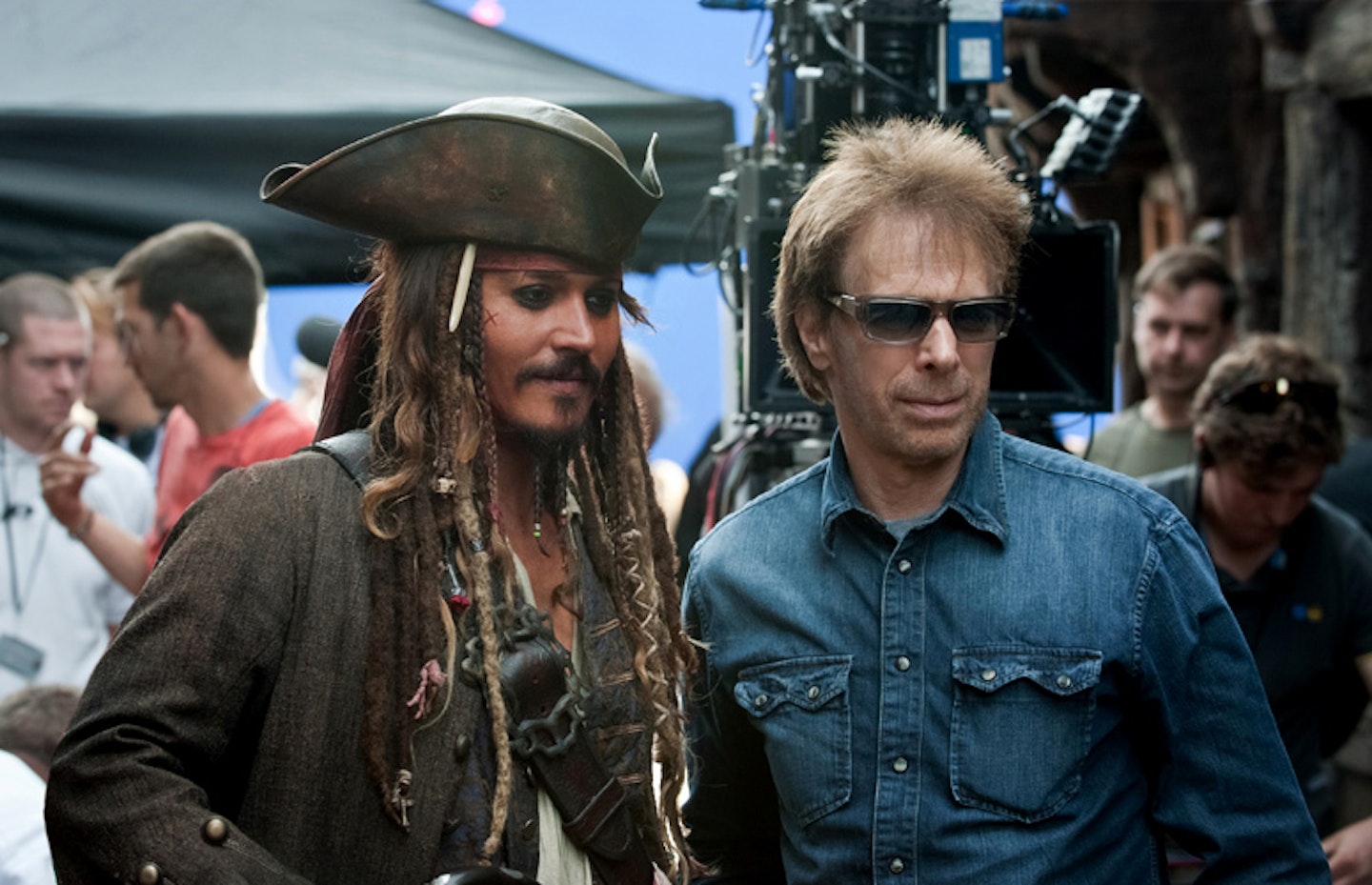
Producer Jerry Bruckheimer with Johnny Depp on the set of Pirates Of The Caribbean: On Stranger Tides
What do they do? Producers shepherd films from beginning to end, from rights acquisition to final release. Like the Mouth of Sauron, they may represent the faceless behemoth of the studio, forming the bridge between the money men and the director (who they’ve usually been responsible for employing) or they may be money people in their own right. They manage budgets, and oversee pre-production, production and post-production, sometimes in close relationship with their director and other times... less so.
Required skills: This job needs similar artistic and interpersonal strengths to the director, with the added requirement that they be comfortable with number crunching, have serious commercial nous and keep a close eye out for great projects in the first place.
The Executive / Associate / Line / Co-Producer

Director Steven Spielberg, stars Kate Capshaw and Harrison Ford with executive producer George Lucas on the set of Indiana Jones And The Temple Of Doom
What do they do? In theory, executive producers supervise the production on behalf of the financiers, while associate producers are essentially second-in-command to the main producer, responsible for whatever producing tasks are delegated to them. Line producers manage the budget and the day-to-day running of the production. And co-producers are often line producers who also branch out into creative decisions. They can also be principal producers from secondary companies working in cahoots with the main production company. Executive (and sometimes associate) producer credits can be bestowed as ego boosts to people only peripherally involved in the production, such as investors, hence David Mamet’s claim in State And Main that “an associate producer credit is what you give your secretary for Christmas instead of a raise”. In such cases what they do is… well, not very much at all.
Required skills: They’re much the same as those for the main producer, but more specialised and compartmentalised. Unless, that is, it’s an honorary title, in which case being mates with someone high up enough should do it.
The Screenwriter
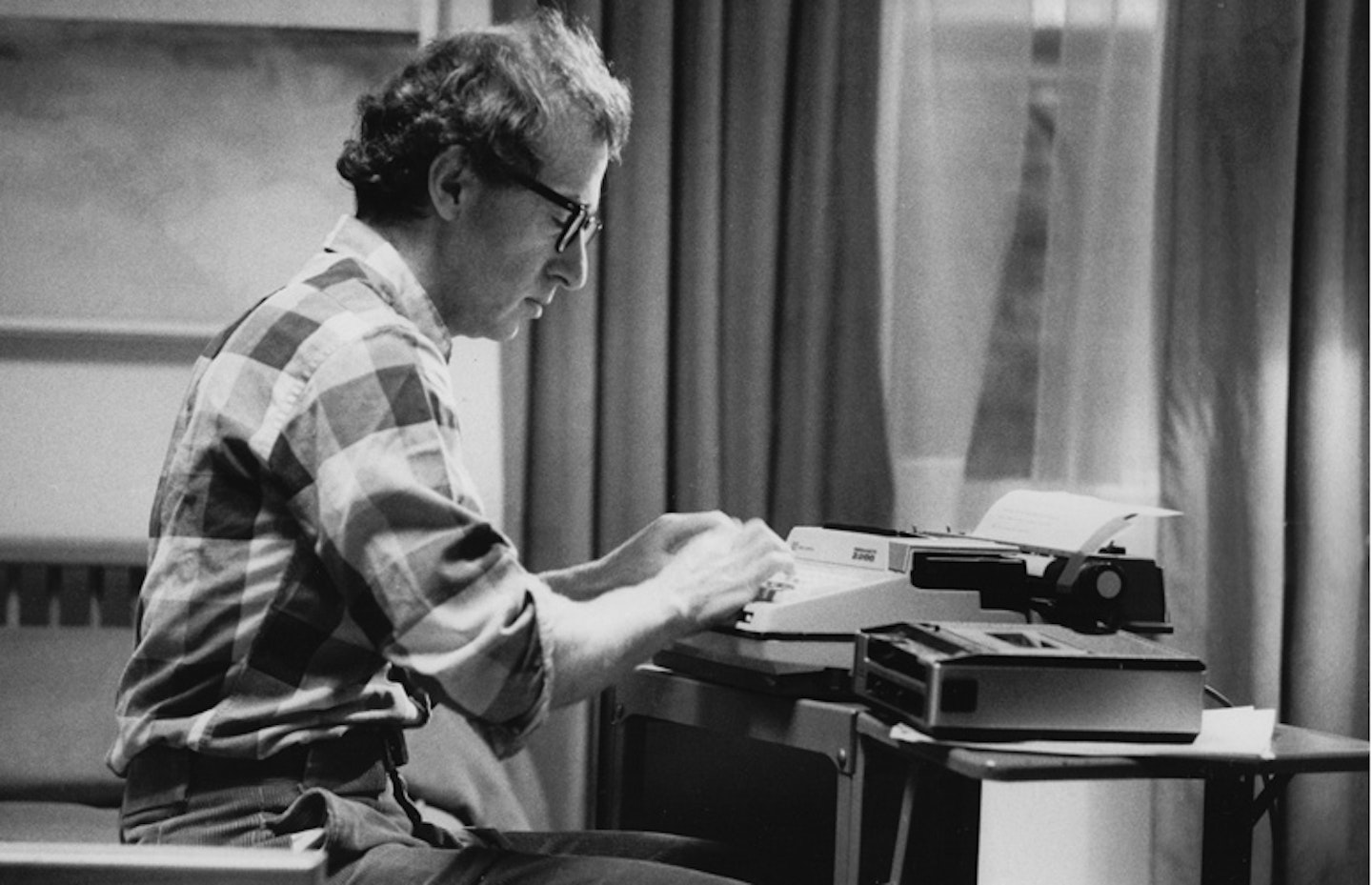
Woody Allen, one of the movies' greatest screenwriters.
What do they do? Screenwriters write screenplays. Duh. This can mean crafting something original, or adapting a known property such as a novel or a comic. Writers like Shane Black and Joe Eszterhas became famous in the ‘90s during the heyday of the “spec” script, written independently by the writer and then sold to a studio for vast amounts. Lately it’s been more usual for a studio to commission a script, but specs have been creeping back (eg. Safe House and Run All Night), although the huge figures that Black and Eszterhas used to command are still the stuff of writers’ fevered dreams for the most part. Established screenwriters can also make a good living by rewriting or “punching up” screenplays, to get them into a shape that producers, studios and director are willing to film.
Required skills: The ability to craft (or adapt) a story so that it works in the context of a film is essential, as is some awareness of the difference between being a professional screenwriter and one of the millions of people in Los Angeles who have a script in their rucksack. Screenwriters also have to be prepared to come up with multiple drafts: their work is rarely deemed right first time. You will probably have to pitch your idea, so some handle on presenting at meetings can be useful. You will also need a thick skin and healthy ego to handle the pummelling that Hollywood provides.
The Composer
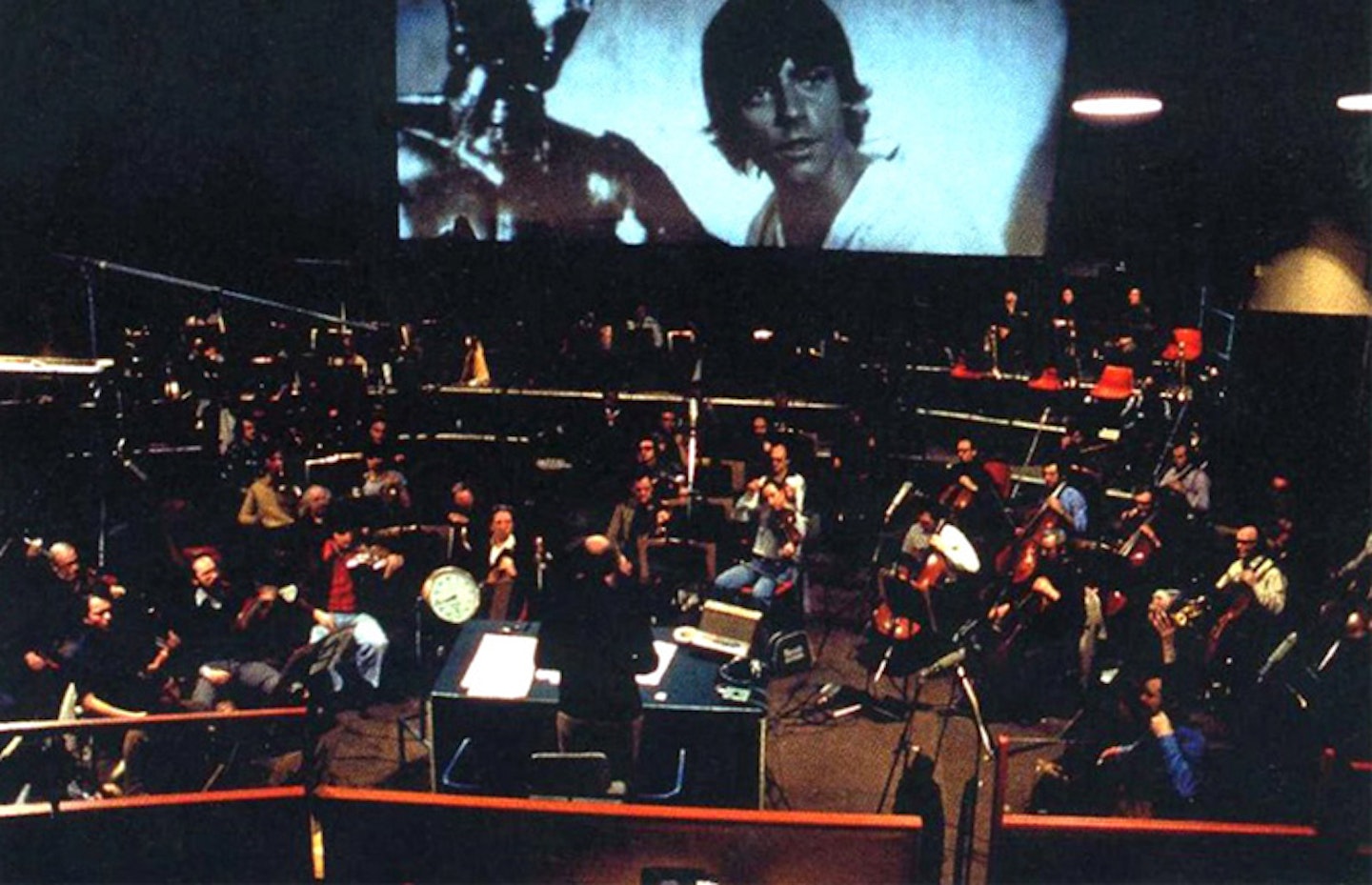
John Williams composing the score to Star Wars.
What do they do? Composers obviously provide music to complement what’s on screen, whether that means driving action-packed moments, underscoring emotional scenes, or creating atmosphere. They generally begin to create music once there are images to work with, but occasionally may be called on to provide “cues” for use during the film’s actual shooting, and sometimes get involved even in pre-production. Depending on the scale of the film, they may work at home on a toy synthesiser or have an orchestra to play for weeks at a time.
Required skills: While they obviously need an ear for music, considerable technical training and the ability to play as many instruments of possible, it varies according to what kind of score is being produced. Traditionally, composers have the ability to score for entire orchestras plus choir, and modern titans of the profession have added electronic skills to that mix (see Michael Giacchino at work, for instance). Others, however, come to the job from a pop or rock background and may have less training, albeit usually just as impressive composition skills (Jonny Greenwood, perhaps).
The Director Of Photography / Cinematographer
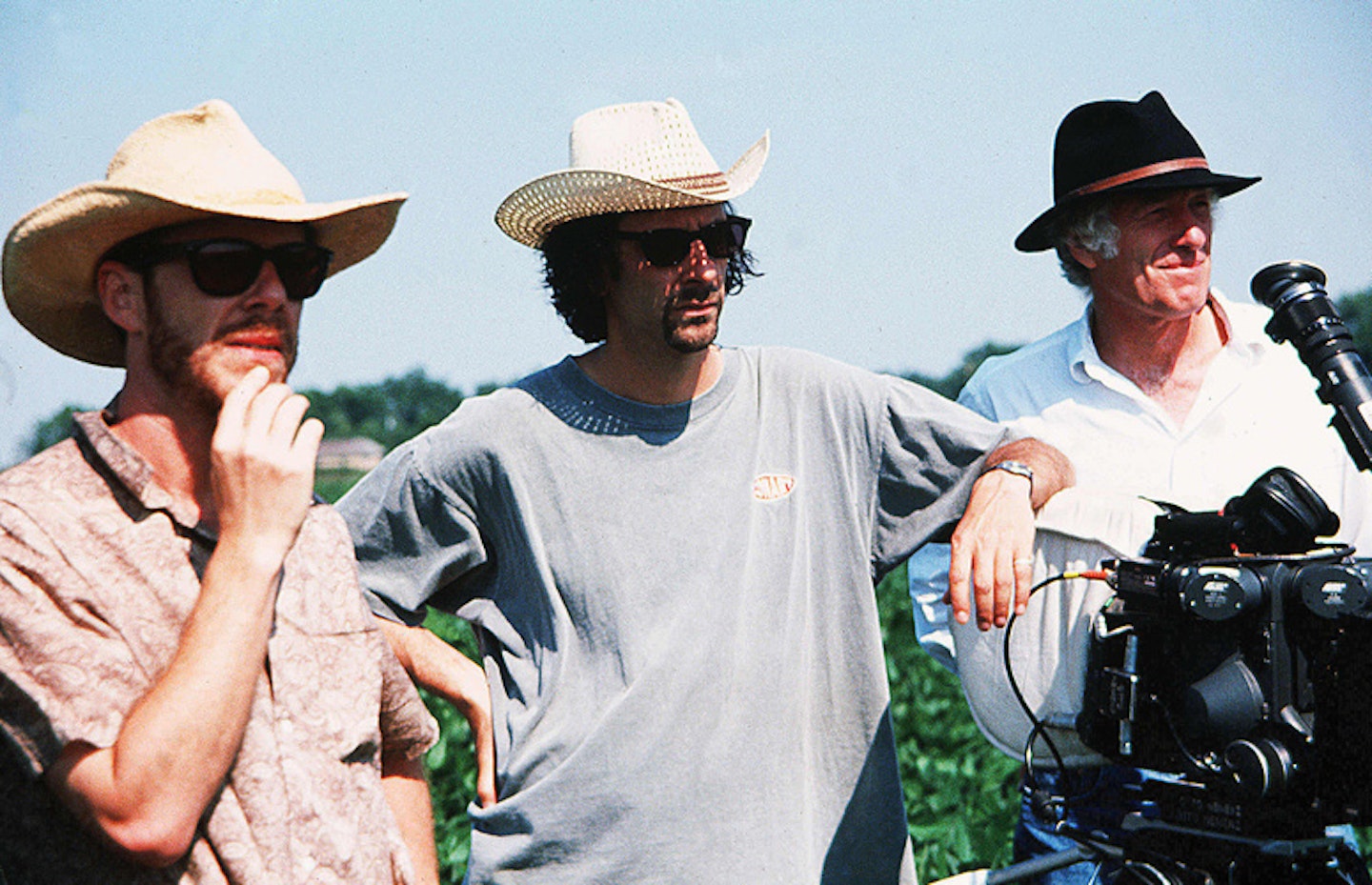
Director of Photography Roger Deakins (right) with the Coens shooting O Brother, Where Art Thou?
What do they do? The cinematographer, also known as the DP or DoP, is the head of the camera and lighting crews, working closely with the director, and is responsible for the look of the film. If the finished result is full of gorgeous shots with rays of shimmering light or lovely colour choices, chances are that the DoP made it happen. They have final say over lighting and framing (in the US at least: cinematographers in the British system sometimes have less say over the composition of shots), and choose the film stock (unless they’ve chosen to shoot digitally), lenses, filters and other paraphernalia. They work closely with the director, and many industry giants are regular collaborators with specific directors (Janusz Kaminski and Spielberg; Roger Deakins and the Coens; Freddie Young and David Lean, for example).
Required skills: The abilities needed are immensely technical but also artistic: they have to know your way around a camera (really, all cameras) and a lighting rig and all the associated add-ons and accessories, but also have an excellent eye for image and composition; many will refer to Old Masters as inspirations, as well as having an often encyclopaedic knowledge of cinema (start by having a look at I Am Cuba, which many cite as genius). Cinematographers are fond of saying that they “paint with light”. So learn to do that.
The Editor
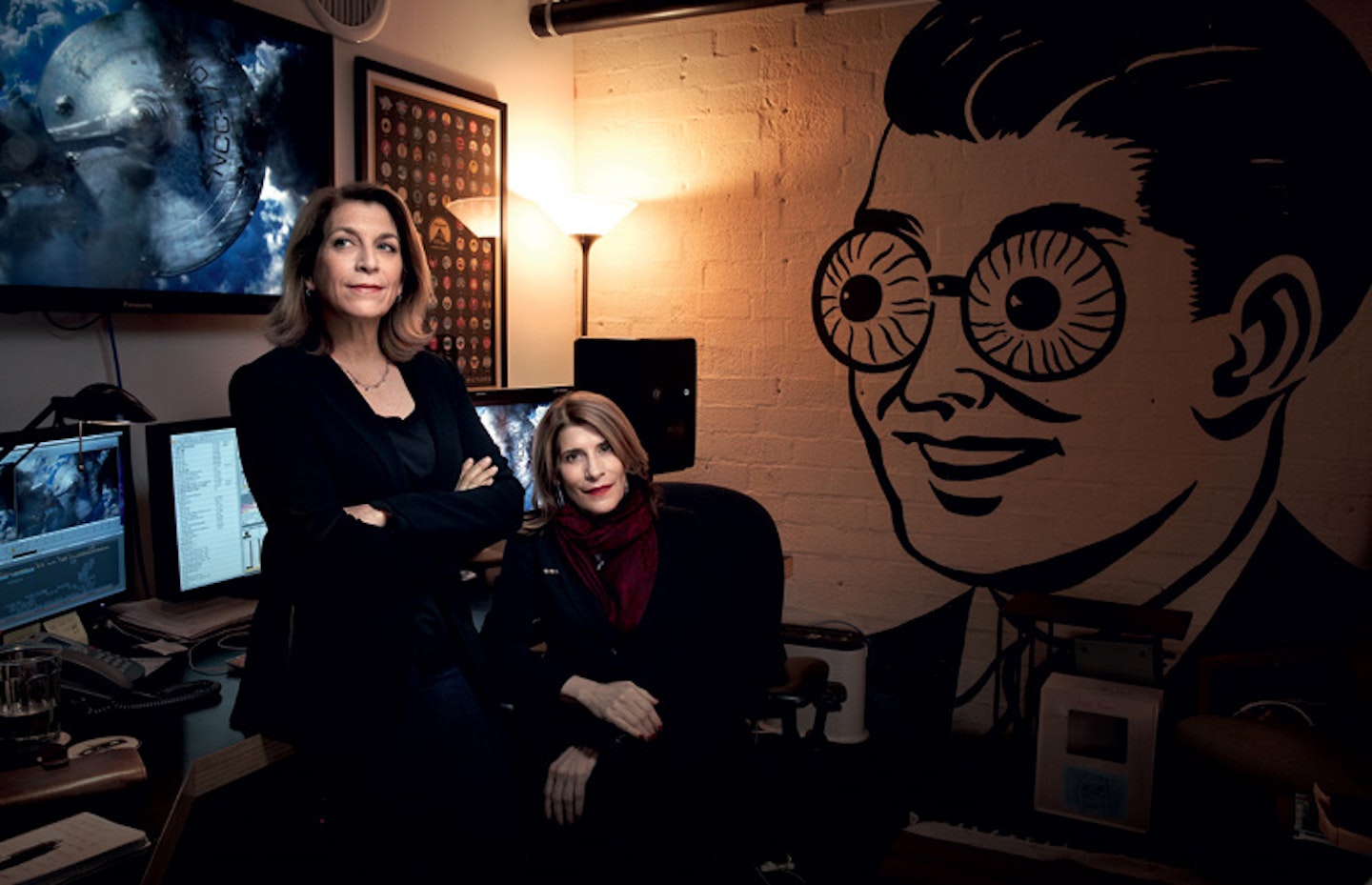
Star Trek Into Darkness editors Maryann Brandon and Mary Jo Markey. (Photo: Art Streiber)
What do they do? Editors are responsible for shaping the film and its narrative, assembling something coherent from the giant jigsaw puzzle of individual shots created during principal photography. They’ll generally have begun working closely with the director on the screenplay before the shoot even started, figuring out how to extract its full potential. They usually start piecing scenes together as soon as production begins – even on location. In these digital days, they often oversee sound, music and effects editing, which used to be separate jobs (and sometimes still are).
Required skills: Again, they need abilities both technical and artistic. They have to expertly know their way around an editing suite – generally a digital one these days – but also have a strong sense of narrative, especially since films tend not to shoot chronologically. They’ll likely find themselves putting the end together before the beginning even exists, so shouldn’t be the sort of person who sits there asking, “Wait, who’s this guy? Why’s he doing that?” throughout the film.
The Casting Director
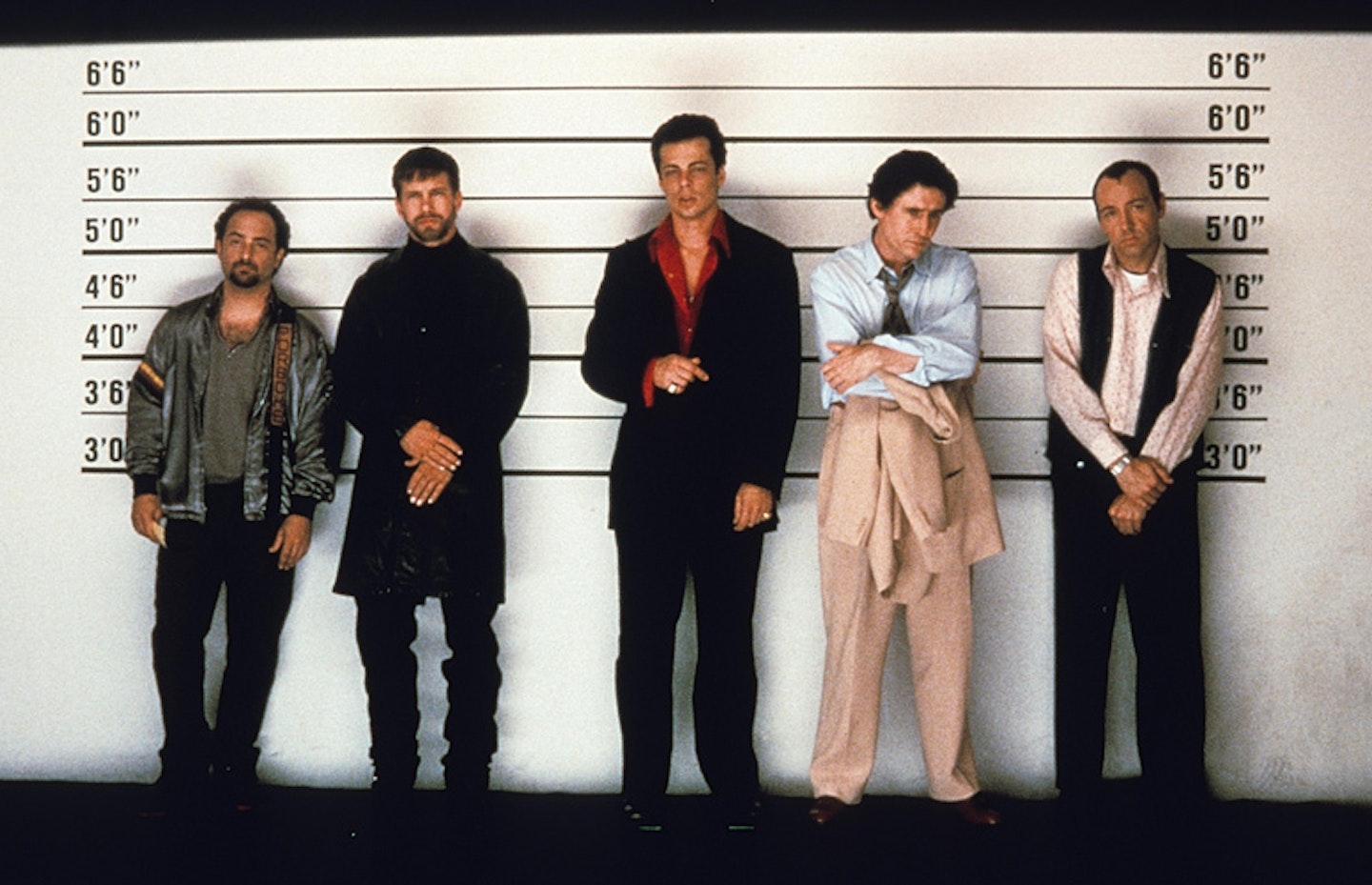
Francine Maisler was the casting director on Bryan Singer's The Usual Suspects.
What do they do? Casting directors work with the director and producer to find the right actors for the roles in the script. They set up auditions and interviews, watch audition tapes and scan headshots to find the right person, and sometimes advocate for actors when they think they’ve found the perfect casting. Once the right person for each role is found (or occasionally the wrong one), they play a role in negotiating fees and contracts, and liaise between the production and the actor’s representatives.
Required skills: An in-depth knowledge of existing and available acting talent, as well as the ability to spot the perfect newcomer if, for example, open auditions are held. They have to have a head for business (bod for sin optional) since they’ll also be working with accountants on the film’s casting budgets. And they need to be a good negotiator: actors’ reps can be fierce.
The Production Designer / Art Director
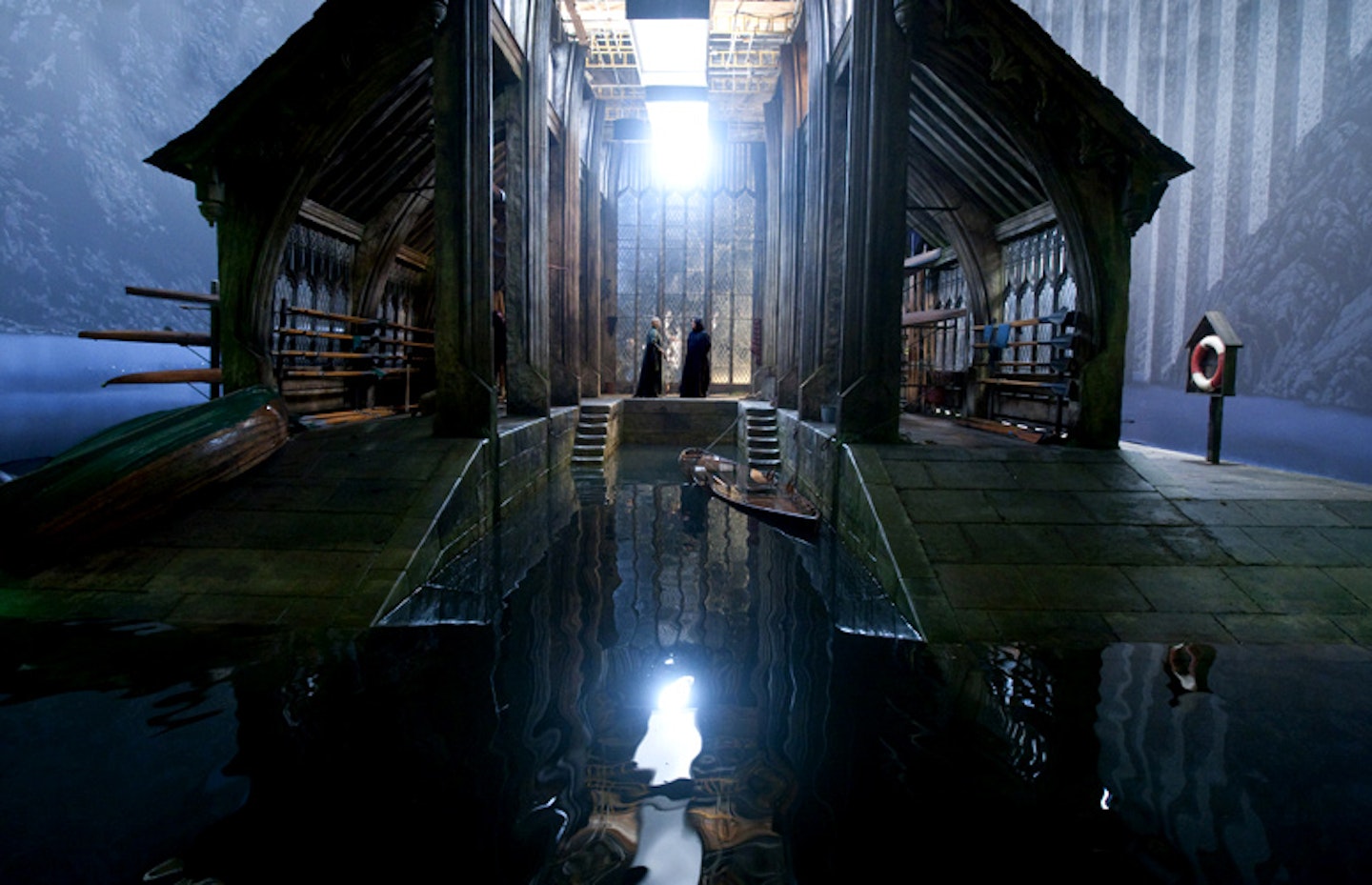
A set from Harry Potter and the Deathly Hallows: Part II overseen by award-winning production designer Stuart Craig.
What do they do? Supervising a team of artists and craftspeople, the production designer has responsibility for the sets and the props, or for dressing and preparing locations, to realise what’s required from the script. In a contemporary, location-based drama this might involve relatively little building and sourcing of material; in a space-adventure or fantasy epic they could be working on sets and props for years (Stuart Craig spent over a decade on the Harry Potter series). They’ll work closely with the cinematographer and director on the film’s visual palette, and may come up with their own designs, or delegate to specialist concept artists.
Required skills: Obviously they have to know their art and design, and even have some construction knowledge, since they’ll be responsible for getting their ideas built. They do a lot of managing too, sometimes of teams with hundreds of members, so people wrangling skills are useful. And they need to be tough: at the end of the day that set they slaved over is going to be torn down and recycled, and lying in the path of the bulldozers – even metaphorically – is frowned upon.
The Costume Designer
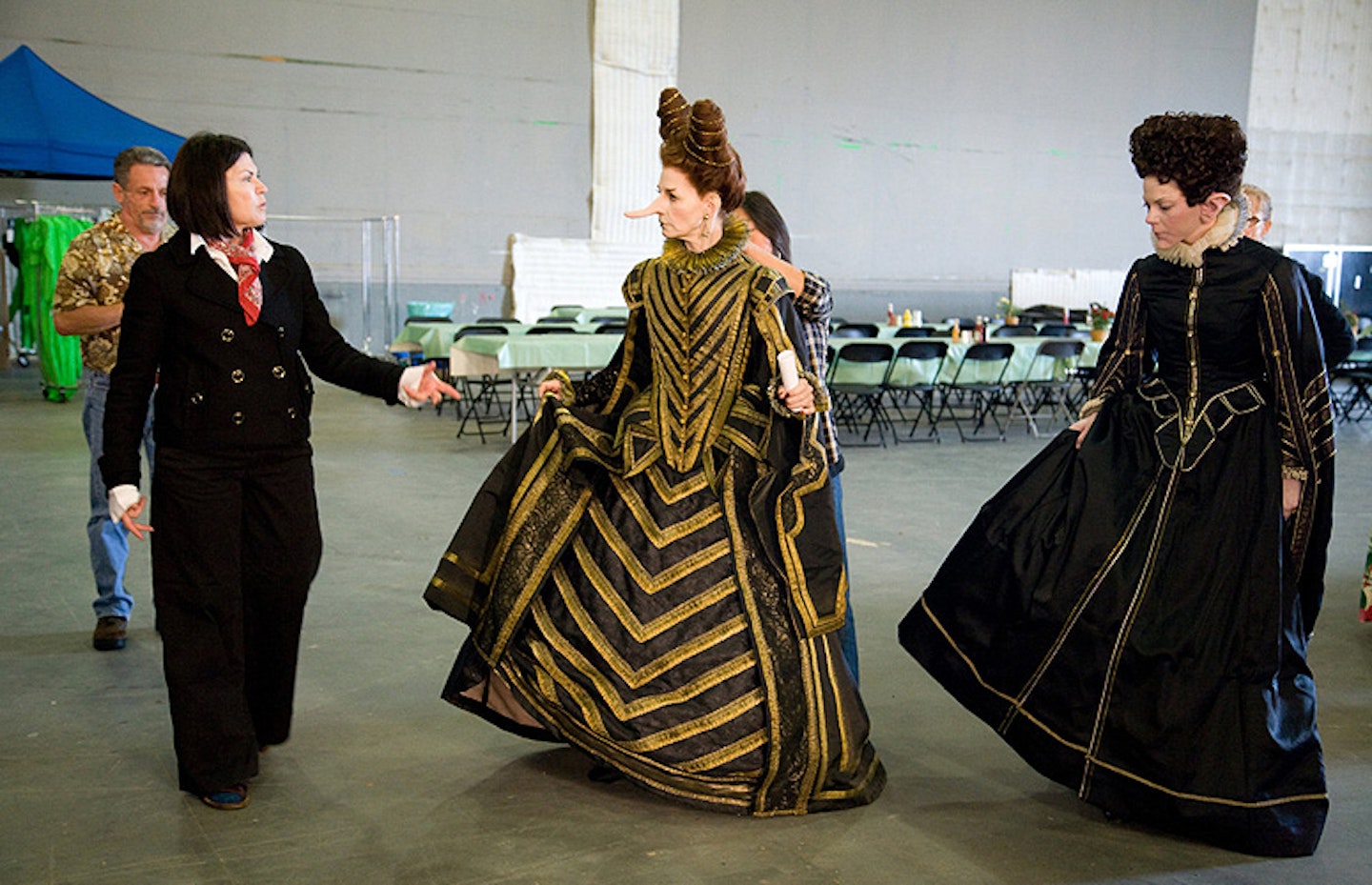
Academy Award-winning Colleen Atwood costume designer (left) on the set of Alice In Wonderland.
What do they do? You’ll be surprised to hear that they design costumes. They’ll also be responsible for researching and sourcing appropriate clothes for the project they’re on, or for researching and sourcing materials and actually manufacturing garments, if what’s required is outlandish or unusual or historical or rare. The costume department also maintain the costumes they end up with, and produce multiple versions for different stages of the movie, frequently maintaining many clean, dirty or battered versions to reflect the story. They generally closely liaise with the production designer, as well as the DP and director, to make sure the overall aesthetic hangs together.
Required skills: The skills are artistic and design-based once again, plus the costume designer will need the ability to manage a team of cutters and stitchers, and to organise what’s often akin to a warehouse of costumes. They need a sense of the film’s narrative too and strong organisational abilities, to keep abreast of what’s needed when, what condition it should be in and which days are going to see 400 orcs turn up in need of armour.
The Make-Up Artist
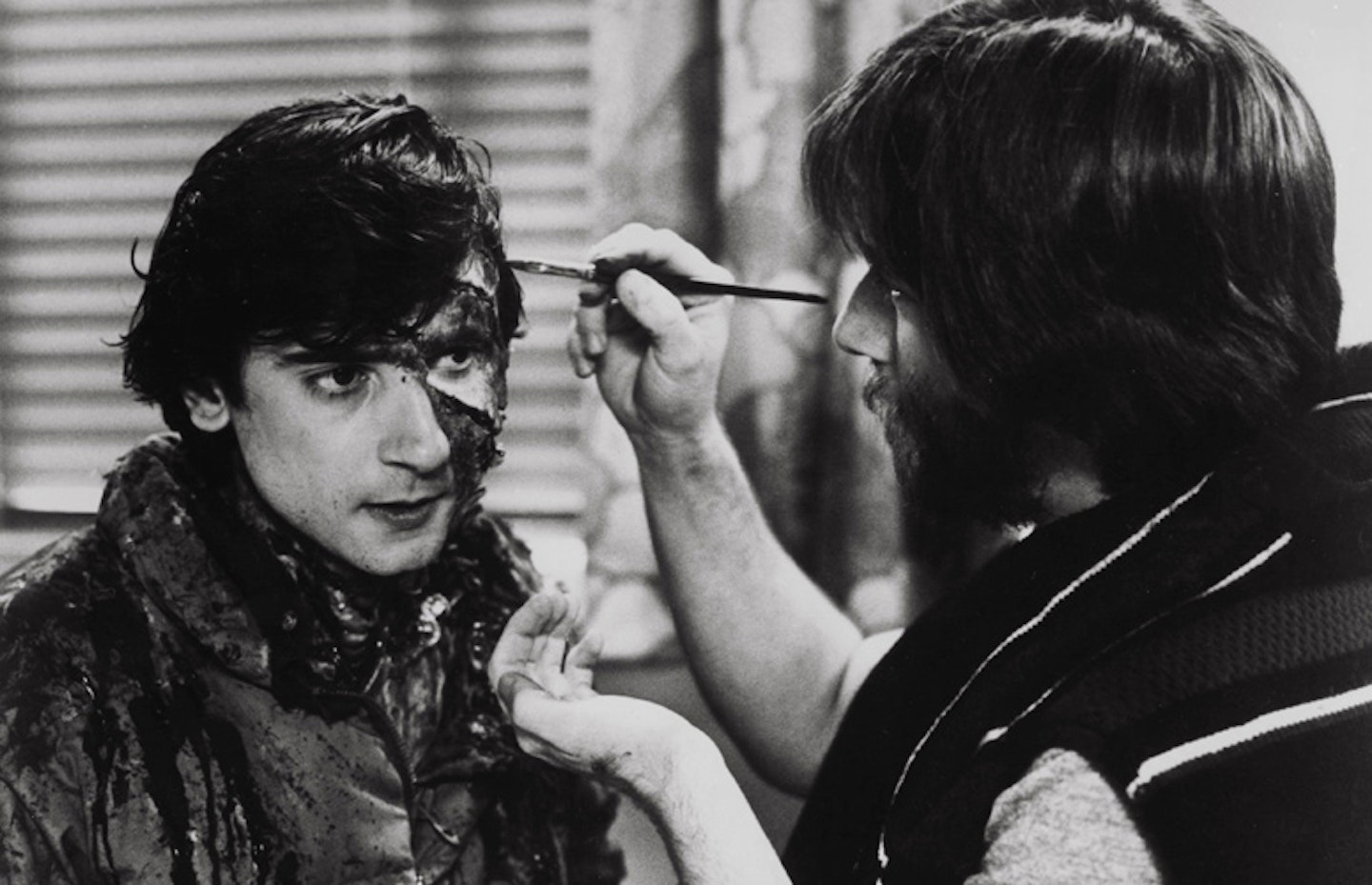
Legendary make-up artist Rick Baker working An American Werewolf in London for which he won an Oscar.
What do they do? Usually in cahoots with the costume department and the hair stylists, make-up artists create the character’s look, dealing with either glamour or “corrective” make-up that will look right under the studio lights. They’ll also deal with things like facial hair, whether genuine or fake. Prosthetic make-up artists, meanwhile, are responsible for more complex effects, by way of latex or other appliances that have to be stuck onto an actor to alter his or her appearance. They also do wounds and gore, and have the tricky job of matching blood drips from one scene to the next.
Required skills: Knowledge of a range of make-up techniques, ranging from the ability to make an actor look old, monstrous, cool, or just normally gorgeous. Chief Make-Up Artists will also be running a department, so again, those people management skills are going to be important.
The Special Effects Supervisor
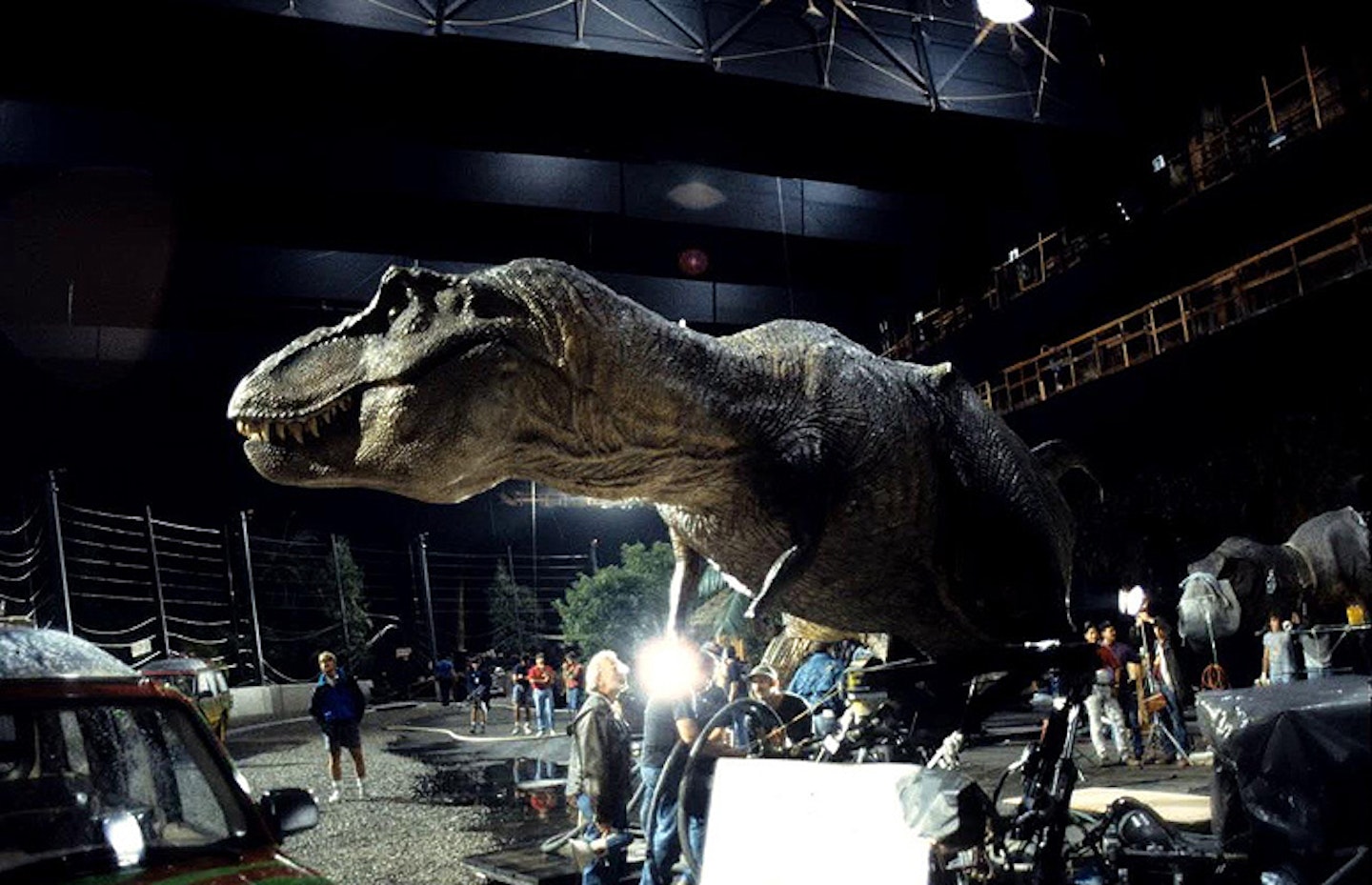
Special effects supremo Stan Winston stands at the foot of Jurassic Park's iconic T-Rex.
What do they do? Head of the department of artists, technicians and general wizards responsible for the “magic” component of “movie magic”. This can mean practical on-set effects like mechanised props, model/miniature work, weather effects and pyrotechnics. Or it can mean post-production visual effects work ranging from the inconspicuous to the astonishingly vast. In the case of Gravity, this basically encompassed every other department on set.
Required skills: During filming the requirements are largely artistic and mechanical, with a strong need for safety monitoring around dangerous effects like explosions. They’ll also have to keep an eye out to make sure that what’s being shot matches any pre-viz that’s already been designed and fits with the planned visual effects work. Post-production digital work obviously requires huge expertise with the relevant computers and their software. As Scott Squires explained to us last year, the willingness to work ridiculously long hours under massive deadline pressure is also handy.
The Production Manager

Skyfall employed multiple production managers across several locations including Shanghai and Turkey.
What do they do? A step below Line Producer, production managers oversee the day-to-day costs of a shoot from the set, creating a budget from the shooting script during pre-production and attempting to ensure it’s adhered to. While producers are responsible for the overall budget, Production Managers deal with the minute specifics. They have no creative input in theory, but are there to facilitate what the director wants to achieve – and in practice their control of the budget means they’re important figures on set. Housing and transport of cast and crew is also part of the remit.
Required skills: Serious organisational and number-crunching skills, as well as diplomacy and hard-headed realism. They’ll generally be on set for the entire shoot, so need to take 100 hour weeks in their stride. Sleep is for the weak! Embrace accounting on the edge!
The Sound Designer
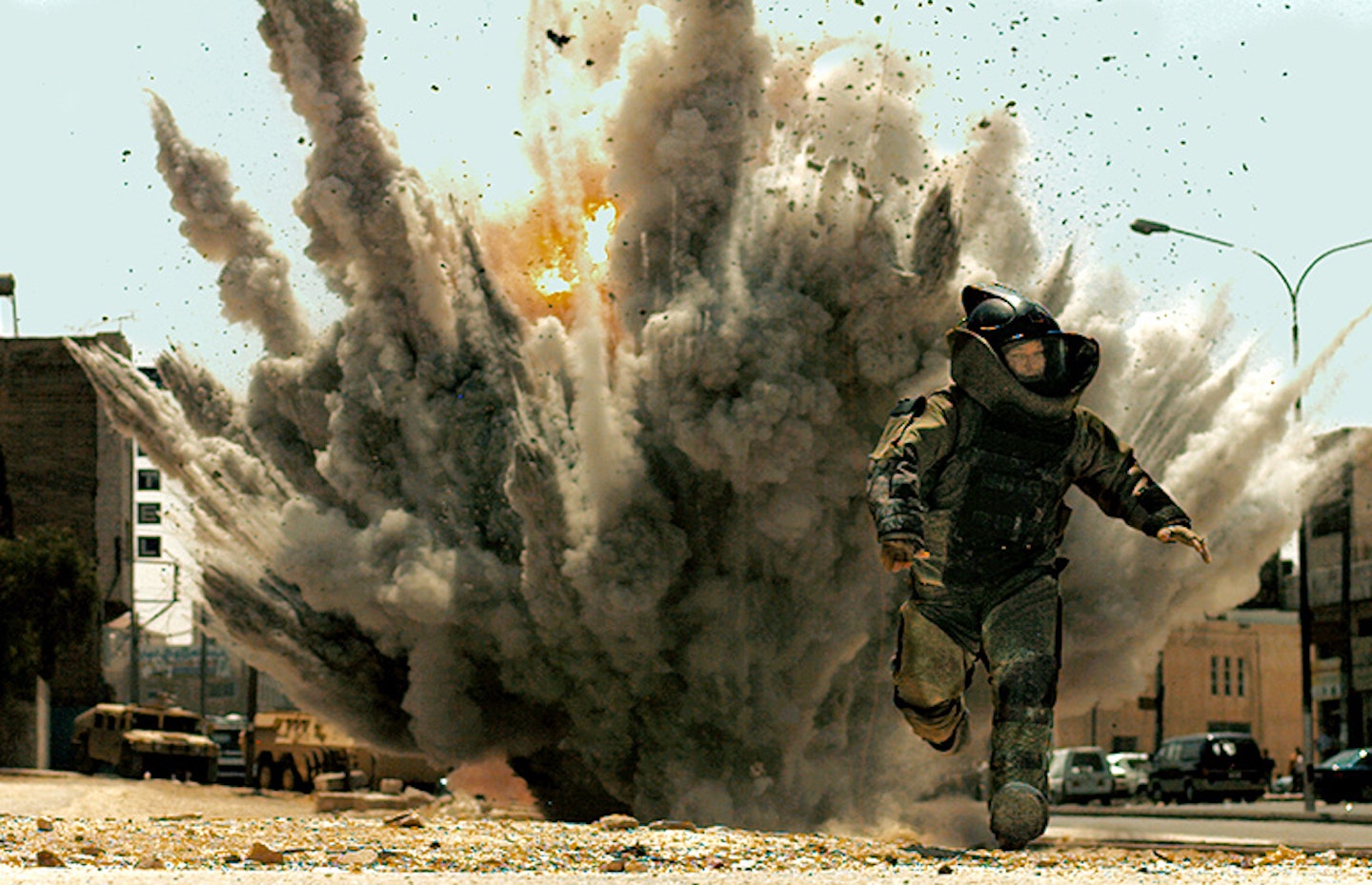
2009's The Hurt Locker won Best Sound at the Academy Awards
What do they do? Along with the composer, the sound designer is responsible for the other half of a film’s aural texture. They deal with dialogue and sound effects, and supervise the final sound mix to ensure that we can hear, say, Jesse Eisenberg and Justin Timberlake talking in the club in The Social Network (but barely) and that we can’t quite make out what Bill Murray says at the end of Lost In Translation (but we know he said something). Francis Ford Coppola was the first to give someone this credit, bestowing it upon Walter Murch on Apocalypse Now.
Required skills: To say they need a good ear is probably an understatement; they need the aural equivalent of one of those ‘noses’ who design perfume. They also need the ability to supervise and lead a team of sound engineers both during production and afterwards.
The Foley Editor / Artist
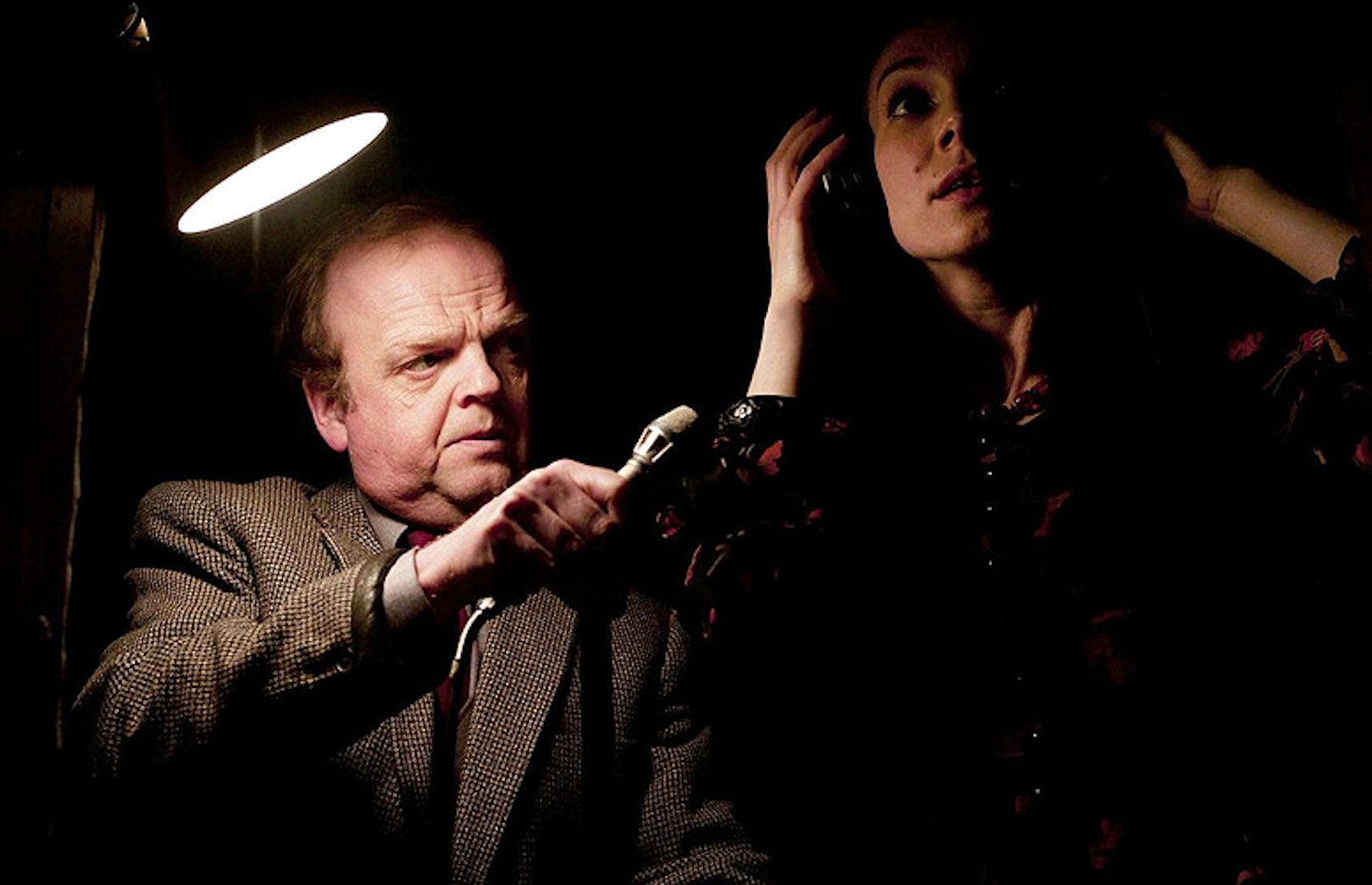
Toby Jones plays foley artist Gilderoy in 2012's Berberian Sound Studio.
What do they do? The owner of one of the best titles in filmmaking works for the sound designer. Foley editors recreate the sounds that it wasn’t possible to pick up or create with microphones during filming (see, for example, Toby Jones’ character in Berberian Sound Studio). They could be required to simulate any sound, from a creaking door to an exploding head. They also cover up unwanted noises on the soundtrack. The name comes from Jack Foley, who pioneered the art in 1927.
Required skills: They need sound recording expertise coupled with outside-the-box creative imagination (the ability to recognise that an opening alien pod sounds like squishing dog food, or that fire sounds like scrunching cellophane, or that an elf casting a spell sounds like peanut shells cracking, for all we know).
The ADR Supervisor
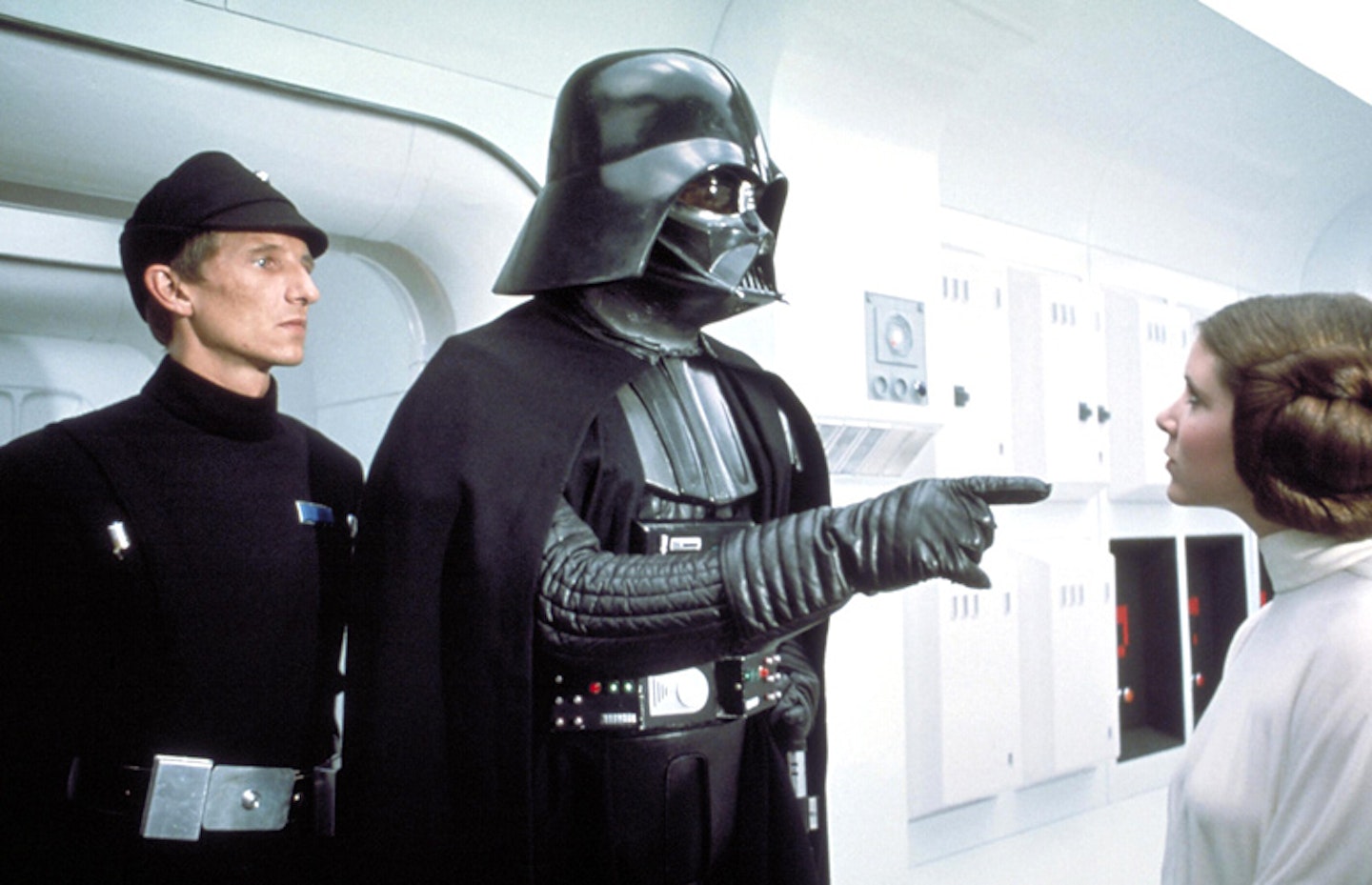
David Prowse played Darth Vader but James Earl Jones' voice was dubbed over his perormance.
What do they do? This person is responsible for re-recording dialogue in post-production, with the actors in something akin to a radio studio. Also known as looping or dubbing, this is necessary to finesse the dialogue as originally recorded, or sometimes to replace unusable production sound (maybe the wind was blowing, or someone backstage was hammering during the only usable take). It’s also used, more rarely, to replace someone’s voice performance with someone else entirely: think Darth Vader.
Required skills: Sound recording expertise – including precision timing for lip-syncing - but this time it will be coupled with the ability to get a good performance out of an actor.
The Assistant Director

Tommy Gormley is first assistant director on many of JJ Abrams projects including Star Wars: Episode VII.
First Assistant Director
What do they do? The director’s right-hand person, the First AD helps in pre-production with breaking down the script into a shooting schedule, and sorting out storyboards if they’re required. During production they’re responsible for running the set and getting people ready to shoot at the director’s command. They also help to arrange locations, wrangle props and equipment, monitor health and safety and keep an eye on the weather.
Required skills: It breaks down into organisational, managerial and interpersonal. They’re essentially the bridge between the director and the rest of the crew, sweating the small stuff so that the director can concentrate on the big stuff. Emphasis, generally, on the sweating, except in the UK where most film sets are bloody freezing.
Second Assistant Director
What do they do? The second AD shares many of the jobs of the first, but is specifically tasked with preparing the daily call sheet (a list of what scenes will be shooting, what’s needed and who needs to be where, when) and being a sort of backstage manager, getting everyone in place when they’re needed on set. On bigger shoots, these two jobs are sometimes separated so there will be a second second assistant director, or a "second" second AD. Yes, these are two distinct roles, with the former more common in the US (abbreviated to 22AD).
Required skills: See those for the first AD. They generally add in the ability to shout really loudly, as it’s often the 2nd AD who calls for quiet on set and generally kicks everyone’s arses until they’re all in position.
Third Assistant Director
What do they do? The third AD works with the First and Second ADs, unsurprisingly, and tends to be in charge of moving actors from their trailers to the set, and supervising the extras in crowd scenes, as well as being in charge of various production assistants on many sets. The precise role depends somewhat on the First and Second ADs (and even second second ADs etc), so while the Director’s Guild of America has a definition it likes to use, many productions ignore it.
Required skills: Once again, they need supreme organisational abilities and a loud voice. Observation suggests that, for all AD roles, familiarity with the use of walkie-talkies and a comfortable clipboard grip are also advantageous.
Second Unit Director
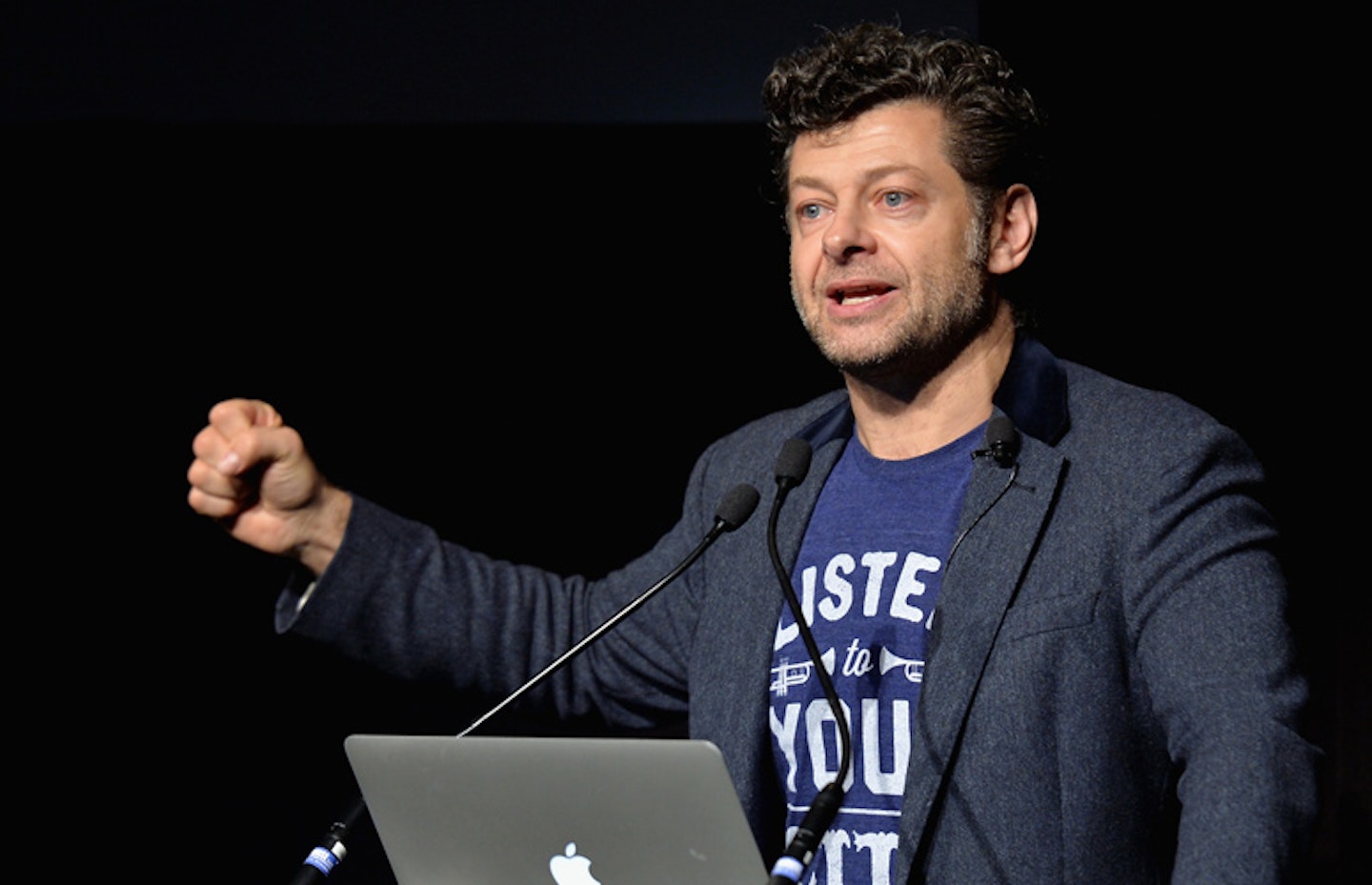
As well as playing Gollum, Andy Serkis served as 2nd unit director on The Hobbit movies.
What do they do? A film’s second unit gathers footage independently from the director, filming establishing shots, small and incidental scenes, close-ups and pick-ups. But the second unit these days often takes the weight of sequences that require a specialist crew, particularly an action or stunt crew – so on a Fast & Furious or Bourne movie, for example, they can be a hugely important part of the film. Alexander Witt directed spectacle sequences in Casino Royale and Skyfall; Vic Armstrong did the same for Tomorrow Never Dies, The World Is Not Enough and Die Another Day. The second-unit director must match as closely as possible the style and techniques of the principal director, essentially ceding their glory to someone else. Some directors, like Guillermo del Toro on Pacific Rim, act as their own second unit director, switching back and forth between main and second unit teams to keep everyone on the same page.
Required skills: These are essentially the same as a principal director, but with an emphasis on individual set-pieces rather than the larger narrative or dramatic performances. The ability to plan, mount and execute a big sequence is essential, and they manage their own film crew. Given how unsung their job usually is, second unit directors also need to have their ego in check.
The Stunt Coordinator / Performer
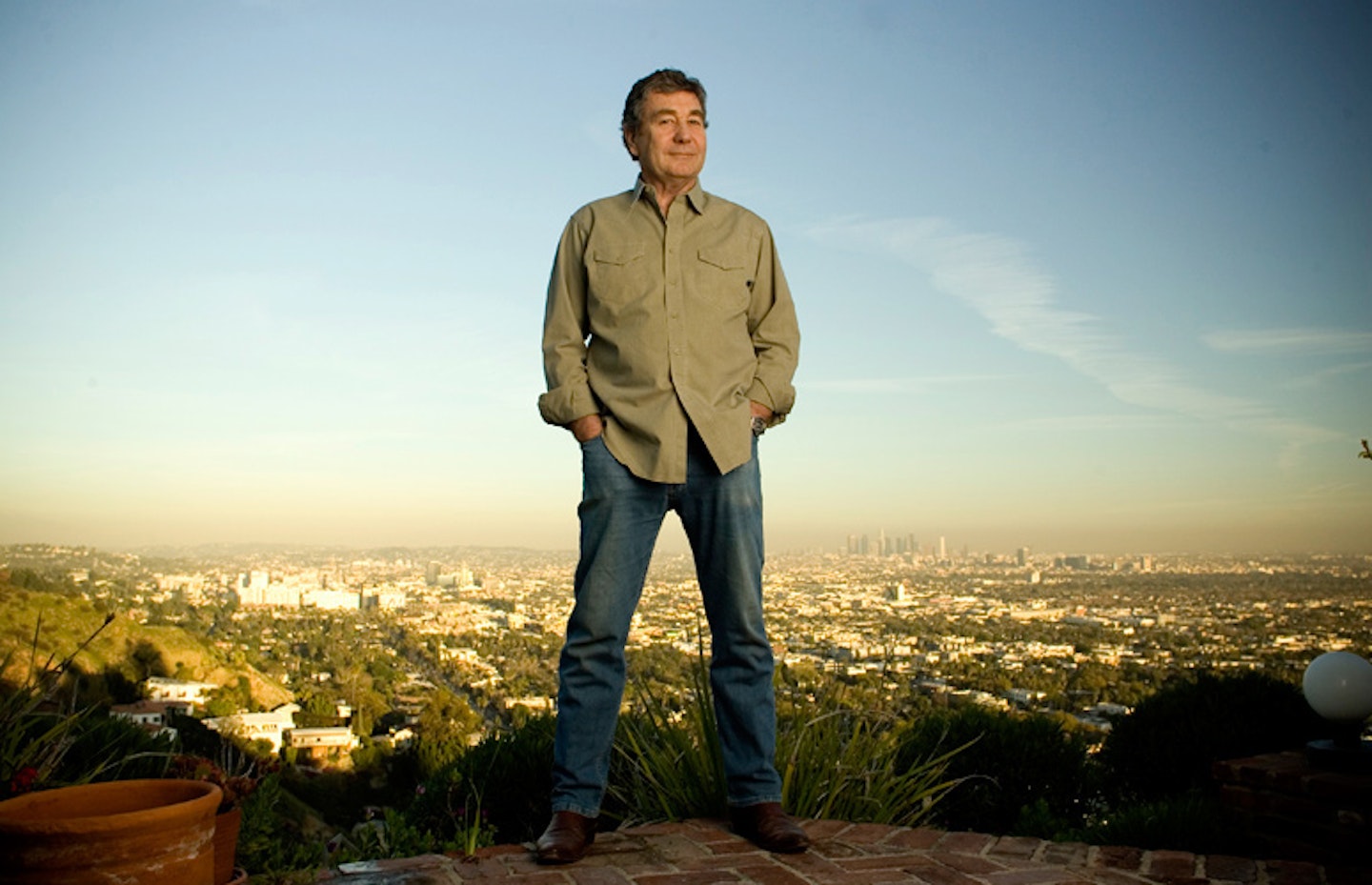
Stunt legend Vic Armstrong who was Harrison Ford's stunt double in the first three Indiana Jones movies.
What do they do? Experts in derring-do, these guys choreograph and perform complex and dangerous sequences, whether on foot or behind the wheel of a vehicle or hundreds of feet in the air. Some would say old-school stunts are being increasingly replaced by CGI, but films like the upcoming Need For Speed still keep an emphasis on practical stunt work, and often even CG extravaganzas see actual stunt performers working on green-screen backgrounds.
Required skills: They need to be keen on meticulous and often mathematical planning to make ridiculous danger (car crashes, explosions, high falls) as safe as possible – daredevils need not apply. If they happen to be a performer as well as a coordinator they’ll also need to be fit, and brave in about equal measure. And if they’re a female stunt performer, they’ll need to be able to do it all in frequently skimpy clothing (reducing the ability to wear safety gear).
Gaffer
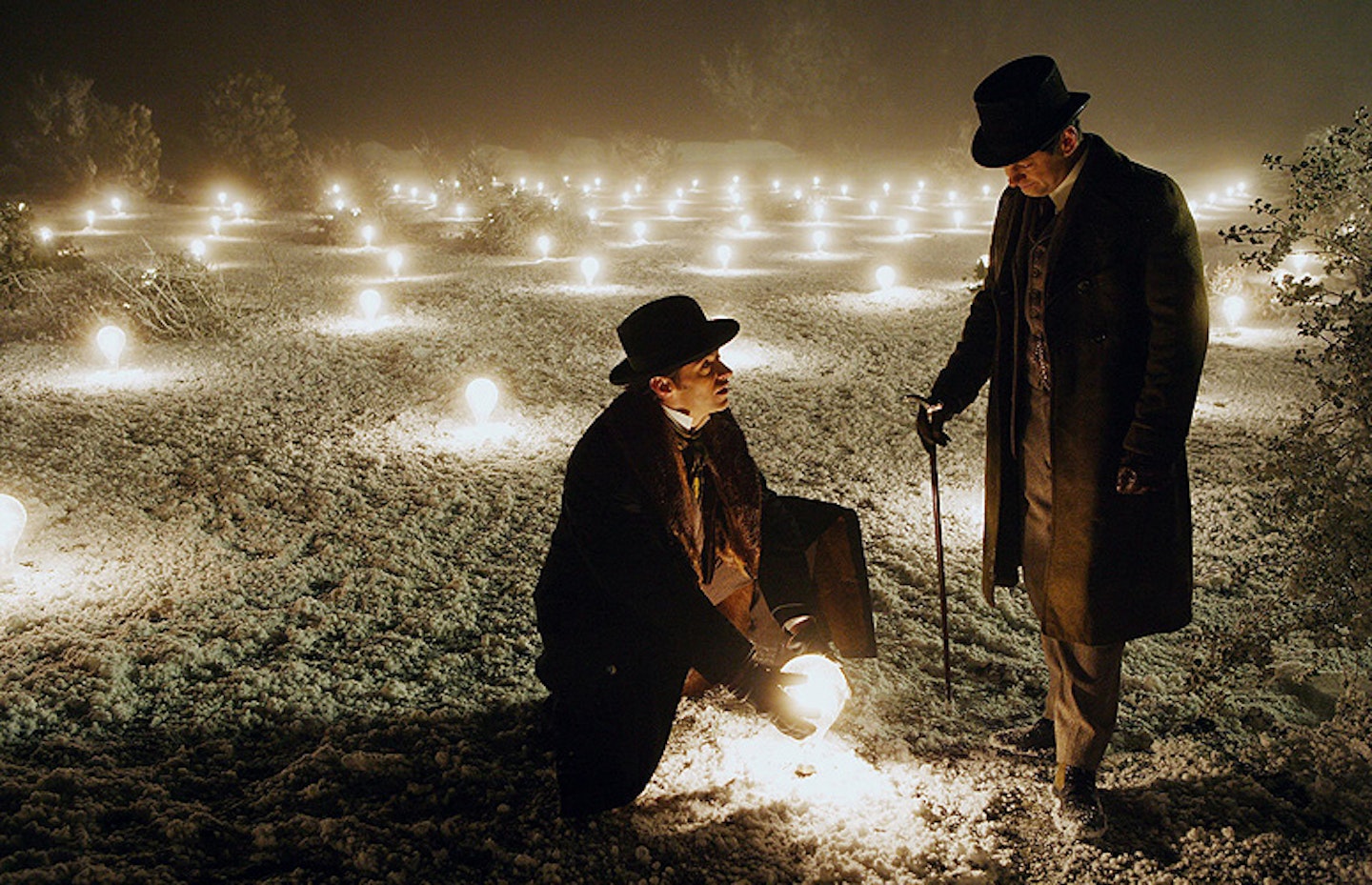
A scene from Christopher Nolan's The Prestige - a gaffer's dream.
What do they do? Perhaps surprisingly, this is nothing to do with Sam Gamgee’s dad. The Gaffer is the head of the electrical department and sometimes called the Chief Lighting Technician. Responsible to the Director of Photography for managing lighting and all the attendant equipment and crew, this is a high-level technical job, even if the design of the lighting itself is the DP’s job. A good DP generally works hand-in-glove with their Gaffer, and these guys are generally able to rewire an entire ceiling’s worth of lights quicker than you can change a plug.
Required skills: They’re similar to those of an electrician, obviously combined with those of a lighting expert, with an understanding of cinematography. But they need to be able to do all of that on a massive scale, at speed, under pressure, managing a team, safely.
The Key Grip / Grip
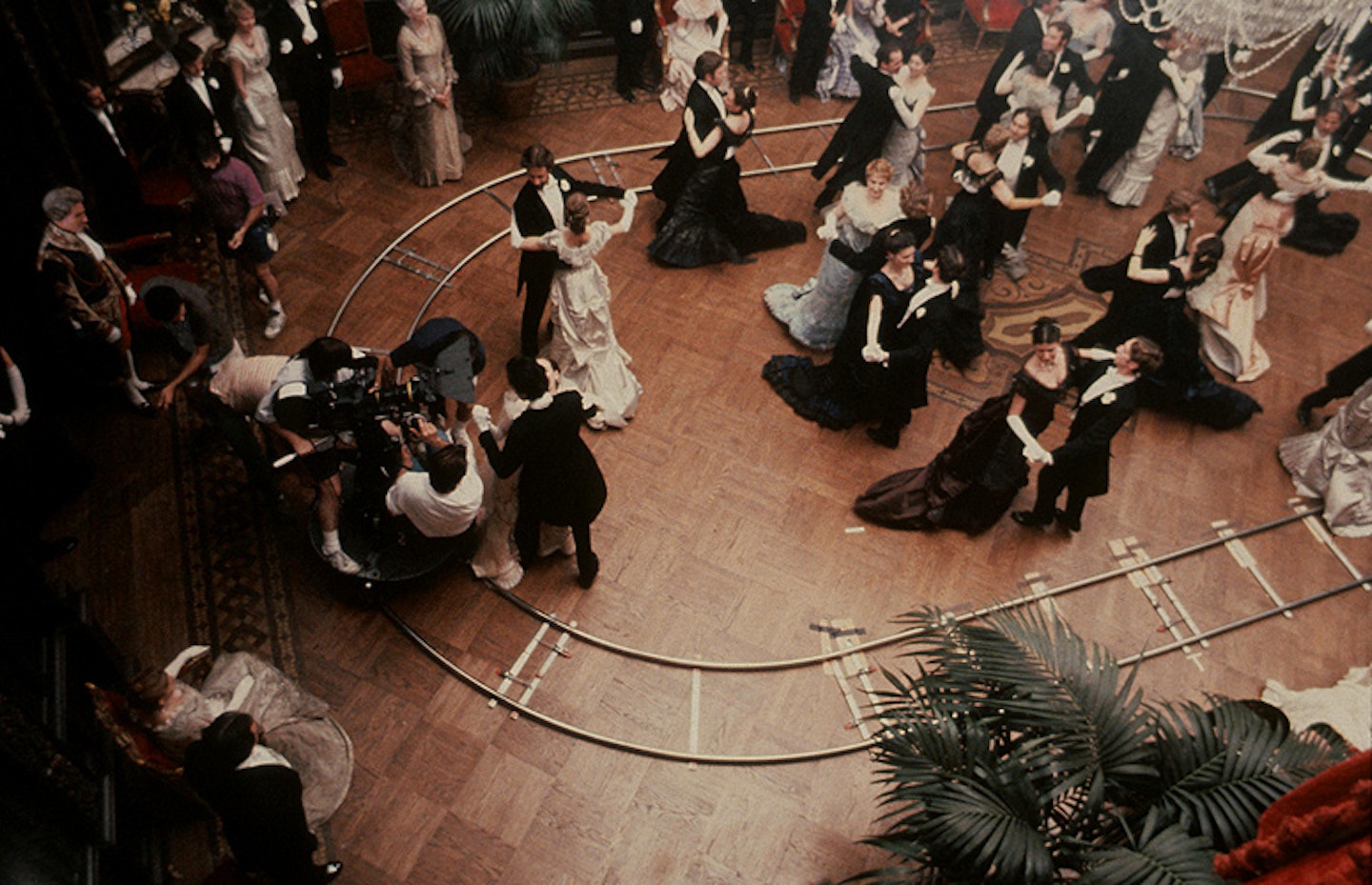
Dolly rails on the set of Martin Scorsese's Age Of Innocence.
What do they do? Grips are lighting and rigging technicians, headed by the Key Grip and responsible to the Gaffer. They assemble the lighting set-ups, but also work with the camera department when the camera needs to be mounted on something complex like a dolly (when the camera moves on rails) or a crane (you know what a crane does).
Required skills: It varies from role to role within the department, but basically they need electrical and mechanical expertise. They also need to attach a large wire loop to their belt upon which they can string lots of duct and electrical tape; that appears to be important.
The Best Boy

Best Boy: How do I take this apart again?
What do they do? This is neither a Scouting term nor a sales assistant at US store Best Buy. In fact, they’re assistants to the gaffer (Best Boy Electric) and the Key Grip (Best Boy Grip). The Best Boy hires and manages crew; orders and keeps track of equipment; plans and manages rigging the equipment on sound stages and locations; liaises with other departments; and covers for the gaffer or key grip when they’re otherwise occupied. They don’t have to be boys, although they usually are, and we’re not sure how they establish that they’re best. Arm-wrestling, maybe?
Required skills: They are essentially those of a gaffer or a key grip, depending on career choice, so once again they need to be able to do practically anything to do with electrics or mechanics.
The Location Manager
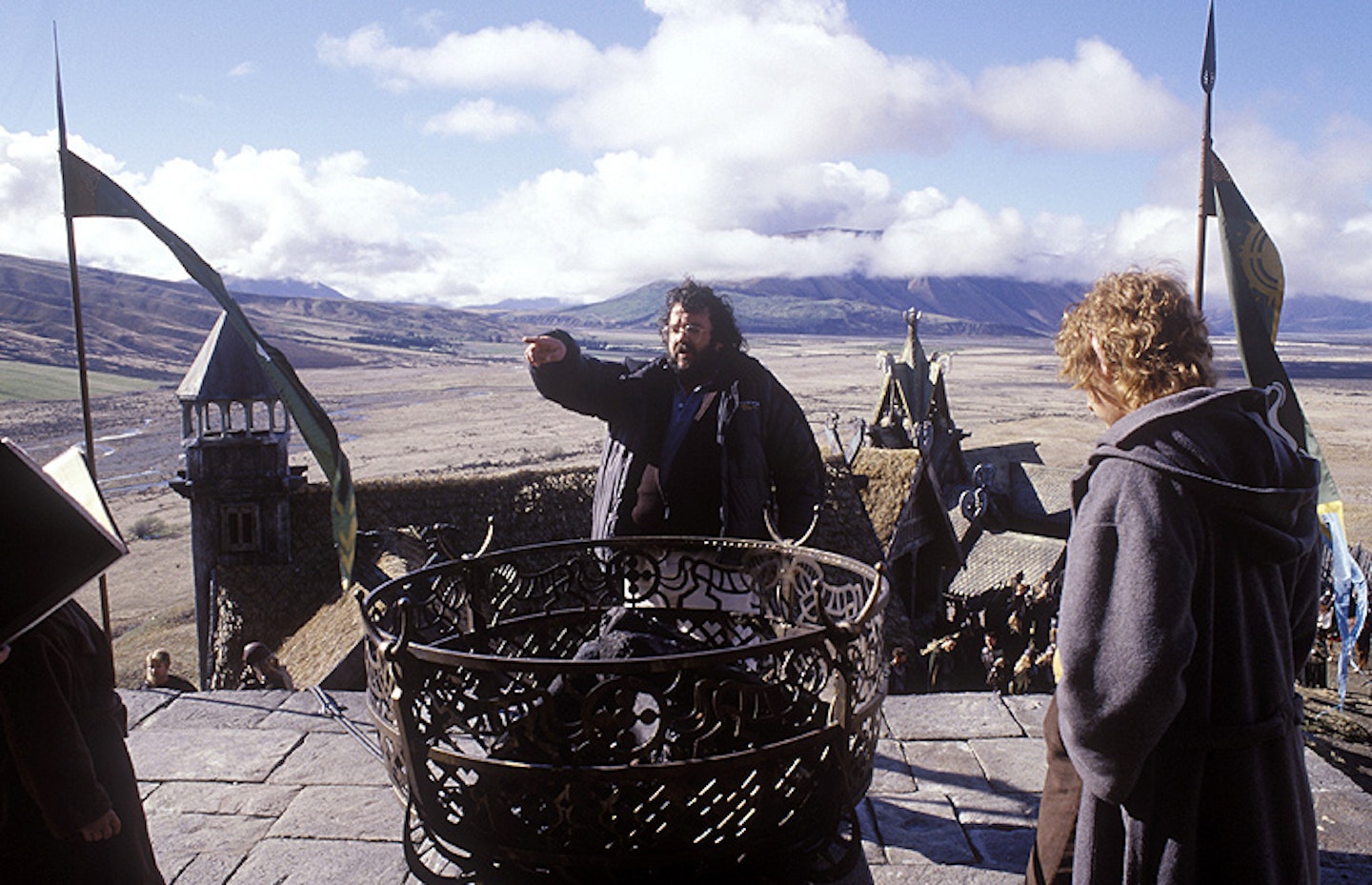
The Lord Of The Rings: The Two Towers – starring New Zealand.
What do they do? These guys scout and arrange locations along with the director and the first AD. Once the location is chosen, they’re responsible for securing all the necessary permits to shoot there, arranging any payments and sorting out the logistics of setting up a crew in the chosen spot. They’re also the liaison between the production and the local community, addressing any issue that might arise from the film crew’s arrival and putting out fires if the crew leaves damage (or indeed fires) in their wake.
Required skills: They need an artistic but also practical eye for what will service the script on screen, plus organisational chops, problem-solving, interpersonal and diplomatic skills. And if we’re correct above, fire service training would be handy.
The Unit Publicist
[First still from Star Wars: Episode IX awaiting publicist approval] Sorry.
What do they do? The unit publicist facilitates a flow of information (or make sure nothing leaks out) between a production and the media. Unit publicists prepare press releases, release stills, and work with producers, sales agents and distributors to figure out press strategies. They also manage publicity budgets, and set up set visits for the likes of Empire to attend and subsequently keep a watchful eye out to make sure we don’t break/steal anything while we’re there.
Required skills: They need organisation, people-wrangling and wheedling skills, knowledge of how the set is running and how the schedule looks, and a good amount of marketing nous. Unit publicists liaise closely with the second AD to organise the timing of set visits too, and in return build up a huge library of scandalous tales that they can never tell anyone. Ever.
The Runner

Keep these coming.
What do they do? This is an entry level, dogsbody role, viewed as a necessary rite of passage to get your foot on the first rung of the film industry ladder. You might be asked to make tea or coffee, deliver messages or equipment or drive people around. You might be asked to help out the cast, crew or production office, or babysit the star’s pet chimpanzee. Essentially, your job is whatever requires doing at that particular moment.
Required skills: Attention to detail, stamina and boundless enthusiasm even while performing menial tasks / cleaning chimpanzee poo off your jumper.
